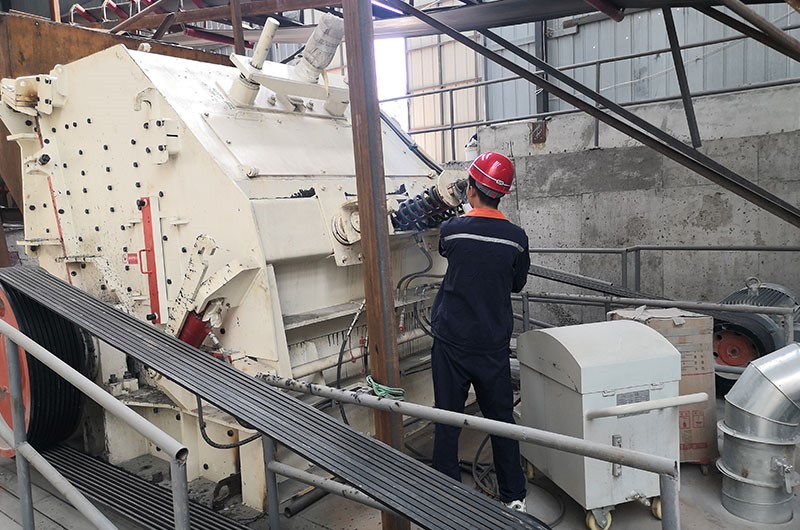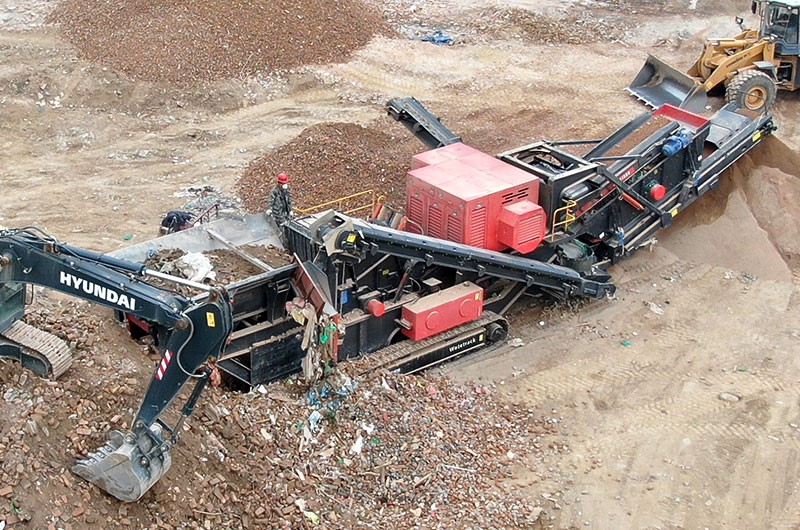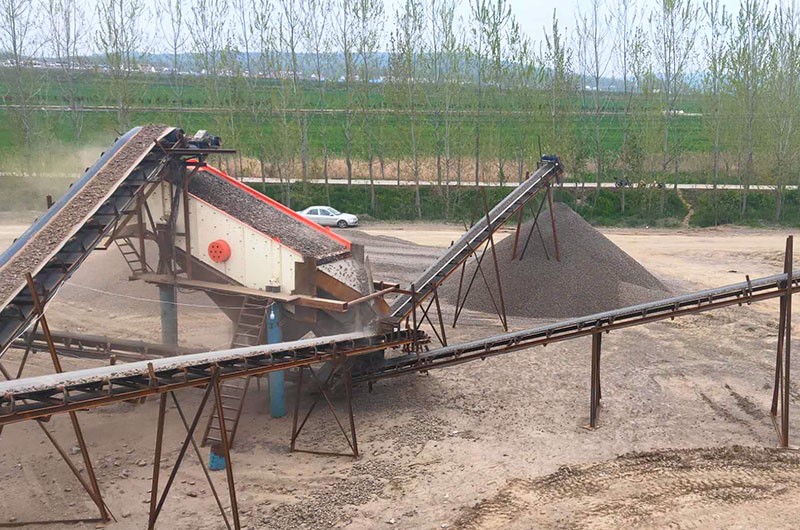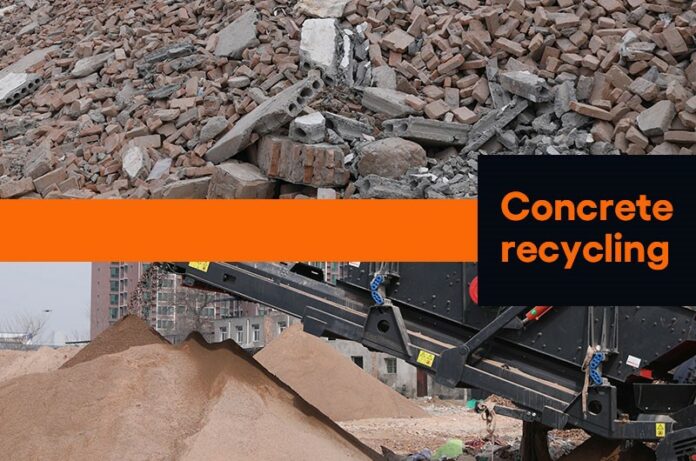There are two approaches to recycling concrete. One approach is to haul the concrete debris to a permanent recycling facility or quarry for crushing and screening. The alternative is to crush and screen the material at the demolition site.
The latter is preferred for the following reasons. Using a portable crusher on site reduces construction costs and eliminates the need to transport materials to and from quarries or recycling facilities. Transportation costs, energy use, and wear and tear on roads and equipment are all reduced. Recycled aggregates are used as soon as they are processed.
Concrete crushing equipment manufacturers are committed to providing efficient stationery crushing plants and mobile crushing plants to enable concrete recycling anywhere.
A complete concrete recycling plant involves concrete crushing and concrete screening.
Concrete crushers
Concrete crushers break down large pieces of concrete waste into smaller, more manageable pieces. Hot-selling concrete crushers are jaw crushers, impact crushers, and mobile crushers.
Concrete jaw crusher
The jaw crusher is a primary crushing machine that reduces the size of large chunks of concrete into smaller pieces.

A jaw crusher works by compressing the material between two plates or jaws, one stationery and one moving. The moving jaw is mounted on a pitman that oscillates back and forth, creating a crushing motion that compresses the material against the stationery jaw. This process breaks down the concrete into smaller, more manageable pieces.
Jaw crushers can crush and reduce the size of various types of concrete wastes, including reinforced concrete, concrete blocks used in construction, concrete slabs used in sidewalks, and flooring, concrete pipes used in water and sewage systems, and concrete curbs and gutters.
Jaw Crushers are available in stationery, track, and portable configurations meeting any demand for concrete recycling.
Concrete impact crusher
The impact crusher is a secondary crushing machine for further concrete crushing.

It works by using a rotating rotor with high-speed hammers or blow bars that impact the concrete materials being fed into the machine. The impact causes the concrete to break down into smaller pieces, which can then be further processed into different construction materials.
In addition to breaking down concrete into smaller pieces, the concrete impact crusher can also produce a more uniform particle size distribution, which can improve the quality of the recycled concrete.
Impact Crushers are also available in stationery, track, and portable configurations.
Concrete mobile crusher
A mobile crusher is a flexible crushing equipment that can be easily transported to different locations.

The concrete mobile crusher works by using a powerful jaw crusher or an impact crusher that is mounted on a mobile chassis. The machine can move from one location to another, which makes it ideal for crushing concrete at different construction sites.
Considerations when choosing a mobile crushing station:
- Equipment should have a powerful electromagnet or water flotation or an air separator system that can pull steel from concrete.
- Separate hydraulic stands will allow for a faster setup.
- Control systems may be automatic, manual, or remote.
- Mobile crushers should be equipped with noise and dust control devices to meet strict environmental regulations.
- The equipment should be compact but have high output.
- Systems that have conveyors, jaws, and impacts can provide complete processing of the concrete, from demolition to usable material.
Vibrating screens
Vibrating screens play a critical role in the concrete screening process by separating aggregates of different sizes and types.

During the crushing process, the concrete is broken down into smaller pieces of various sizes. Vibrating screens are used to separate these pieces into different sizes, which can then be used as aggregate for new concrete. The vibrating screen separates the aggregate into several different sizes, allowing for more precise and efficient use of the material.
In addition to separating the aggregate, vibrating screens can also remove any debris or contaminants from the recycled concrete. This can include materials such as wood, plastic, and metal that may have been present in the original concrete. By removing these contaminants, recycled concrete can be used in new construction projects without compromising the quality or integrity of the final product.
Screening equipment is divided into fixed screening equipment and mobile screening equipment. If you need to crush and screen concrete waste at the demolition site, mobile screening equipment is your best choice.
Conclusion
Crushed concrete has a variety of uses and can be used as construction aggregate, drainage stone, stone roads and driveways, road bases, and backfill.
Recycling is the best way we can reduce waste as a society – concrete is no different than cans, plastic, and paper, it can and should be used again. This is also the original intention of concrete recycling equipment manufacturers.


